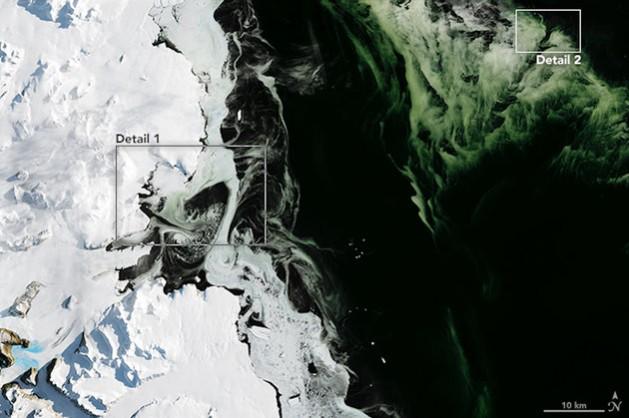
A mysterious feature has been spotted in Antarctica's Granite Harbor -- a bay off the coast of Victoria Land -- which spreads over an area of 26 km (14 nautical miles), located in a cove near the Ross Sea.
Also Read: Mother refuses to breastfeed "alien" baby born in Bihar, India [VIDEO]
The photos of the Operational Land Imager (OLI) on Landsat 8 were taken on March 5, 2017.

Jan Lieser, a marine glaciologist from Australia's Antarctic Climate and Ecosystems Cooperative Research Center believes: "The green color is caused by phytoplankton at the water's surface that have discolored the sea ice. These microscopic marine plants, also called microalgae, typically flourish in the waters around Antarctica in the austral spring and summer, when the edge of the sea ice recedes and there is ample sunlight. But scientists have noticed that given the right conditions, they can grow in autumn too."
The microscopic marine plants, phytoplankton, are an important part of the marine food chain, which is a source of nutrients for sea creatures such as whales, jellyfish, shrimp and snails.

This is not the first time such a discoloration, caused by microscopic plants, is being observed in an icy area.
In 2012, Lieser and his colleagues observed a similar phenomenon off East Antarctica's Princess Astrid Coast. The late blooms were confirmed and measured by an Antarctic research ship.
Various factors like sunlight, wind, sea ice, predators and the availability of nutrients are responsible for the growth of plankton in enormous quantities, which means they can even be seen from space.
"In early 2017, there was not much ice anchored to the shoreline [fast ice], a condition that is thought to help 'seed' phytoplankton growth. But offshore winds and sunlight favorable for growth made conditions similar to previous years that supported blooms, according to Lieser," the NASA statement revealed.









